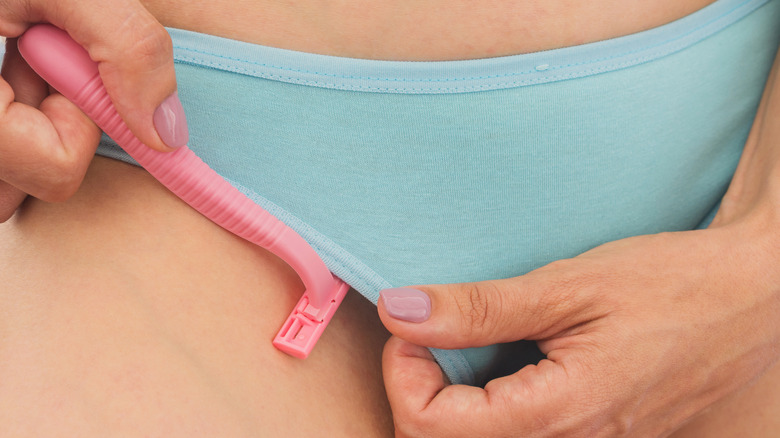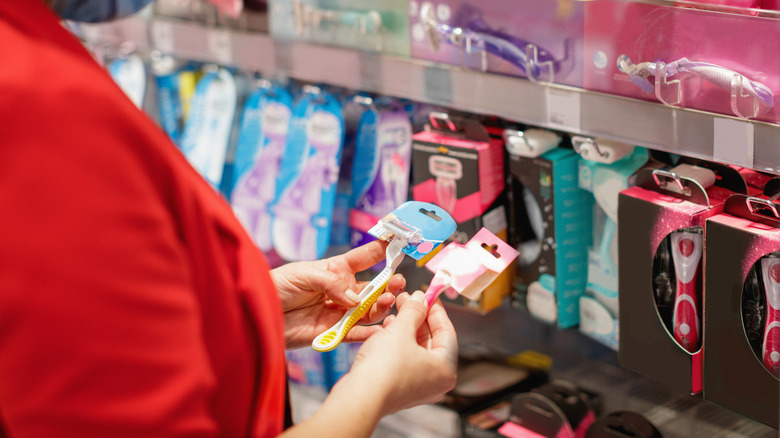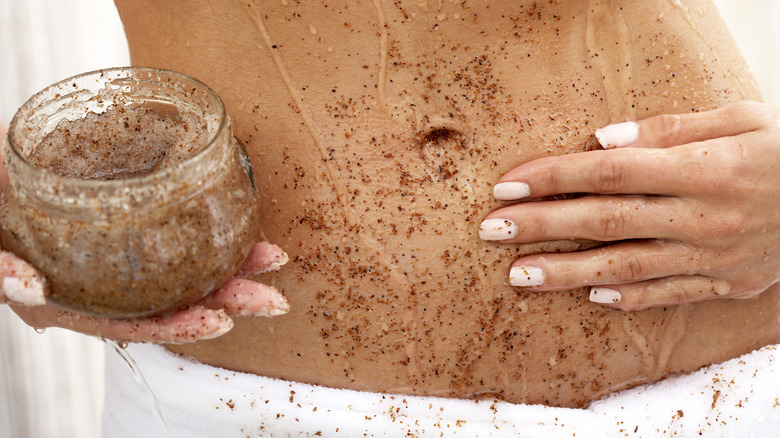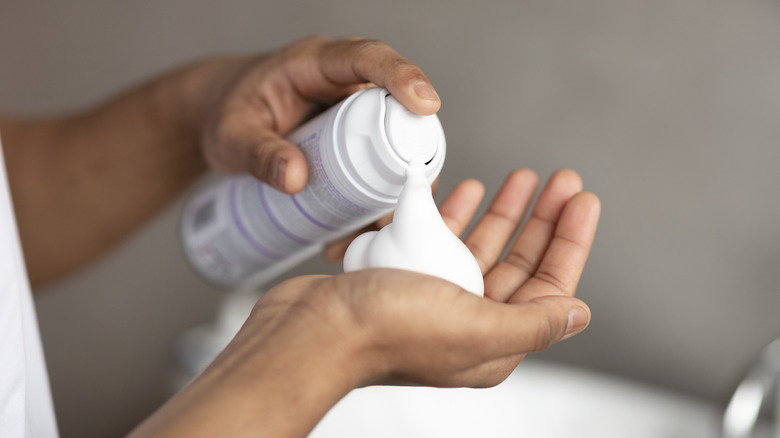4 Ways To Prevent Annoying Bikini Razor Bumps
If you're someone who chooses to remove some or all pubic hair during swimsuit season, then you know that razor bumps can be a major intimate summer concern. While not everyone shaving their bikini area will end up with these rash-like bumps, it's such a sensitive spot that there's always a chance you'll have to deal with them. And, to merely call them annoying is an understatement.
Also called pseudofolliculitis barbae (PFB), razor bumps are actually ingrown hairs that have grown back into the skin, causing inflammation because they weren't removed properly. "This is especially common on the bikini line due to the coarse and curly nature of the hair, which makes it more likely to re-enter and irritate the skin after being cut," board-certified dermatologist, Dr. Jenny Liu, FAAD exclusively tells Women. "The bikini area is also prone to irritation because it's a sensitive zone with thinner skin that can react more to the friction and mechanical action of shaving."
But as ugly and painful as razor bumps can be, there are ways to prevent them. It all starts with upgrading your shaving technique and treating your bikini line like the sensitive area that is.
Make sure your razor is relatively new and clean
You don't need a brand-new razor every time you shave, as long as you clean it and store it properly (meaning not in the shower or any other place with moisture), and it still has a sharp blade. If you try to shave with a dull blade, you'll be forced to press harder than you would with a sharpened one to get a close shave. "A sharp blade ensures a clean cut and less tugging, which reduces irritation," says Dr. Liu. "Single-blade razors can also help prevent cutting the hair too short, decreasing the likelihood of it curling back into the skin."
If the blade is dirty, as in corroded with dead skin cells and soap or similar residue, it can be a hotbed for bacteria and germs. So if the razor is both old and dirty, you're not just irritating the skin from the necessary pressure, but you're depositing a bunch of gunk on the area that won't just cause bumps, but a possible infection too. In other words, don't hang onto your razors for too long, and always keep them super clean. According to the American Academy of Dermatology, you should ditch your razor every five to seven shaves, or sooner if it shows any sign of rust or it's visibly dulling.
Exfoliate the area beforehand
Exfoliation should always be on the menu when it comes to keeping the skin clean and healthy. Considering just how important exfoliation is to your facial skincare routine, it only makes sense that it should be used on the rest of your epidermis as well to keep it clean and healthy. "Without exfoliation, the razor tends to get buildup and may not remove hair as efficiently or close to the skin," board-certified dermatologist, Maya Thosani, MD told Real Simple. "Exfoliation also removes the dead skin that surrounds and coats the hairs, so it can seem like it lifts the hairs up for a closer shave and a smoother result." You also want to save shaving this area for the last step in your showering routine, so the warm water has had time to soften the skin and hair, according to Dr. Liu.
Although it might seem like the exfoliator you use on your face should be okay for your bikini line, it's essential to remember that different parts of the body need different types of care. Because of this, use products that are specifically made for the bikini line or, at the very least, look for products that stay away from harsh chemicals. Ideally, they should include glycolic acid and salicylic acid, which are fantastic for razor bumps.
Use actual shaving cream or gel
If you're using soap or body washes to shave any part of your body — not just your bikini line — it's time to stop immediately. These types of products contain ingredients that are awful for shaving on two fronts: they damage the razor, as well as the skin. "[Soaps] can trap moisture and allow more bacteria to grow on your razor," dermatologist, Annie Chiu, told HuffPost, adding that the residue of these products dulls razors. "Typically, soaps do not provide the gentle glide that a shaving gel does," explained Chiu.
But as much as you should be using cream or gel that's specific to shaving, make sure you don't overdo it. "Too much product can make too much of a slippery shave, and in sensitive places like the bikini area can interfere with good visualization," said Chiu. Just because you make the leap from soap to cream, doesn't mean you should go nutso in your application. Moderation is always key.
Shave in the same direction as the hair
Here's a tip: you should always shave with the grain. Even your legs. While you can shave against the grain to get a closer shave, it's better for the skin and hair follicles if you shave down your leg, rather than up. Since that's the case when shaving any area, then you should of course implement this when shaving your bikini line. "Shaving against the grain can pull hairs away from the skin before cutting them, increasing the risk of razor bumps," Dr. Liu exclusively tells Women. "Shaving with the grain reduces irritation and helps keep the hair long enough to prevent it from curling back into the skin." When you're done shaving, make sure you clean your razor and store it someplace cool and dry. Before you go on with your day, moisturize the shaven area with a fragrance-free hydrator.
However, if despite taking these steps you still end up with razor bumps, you need to take care of the area. "Allow the hair to grow out a bit before shaving again to give your skin time to heal," says Dr. Liu. "Shaving over razor bumps can worsen irritation and lead to infection." You also want to apply products that calm the skin. "Products containing aloe vera, tea tree oil, or hydrocortisone can reduce inflammation and soothe irritated skin," explains Dr. Liu. "OTC hydrocortisone can help if it's inflamed and benzoyl peroxide cleanser can also reduce inflammation, especially when used regularly."




